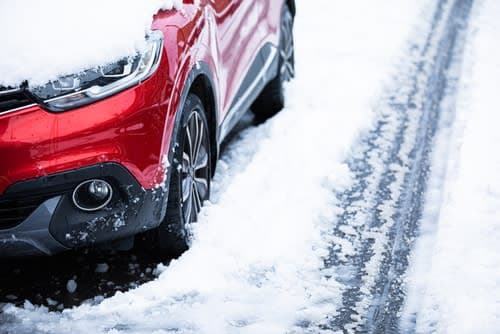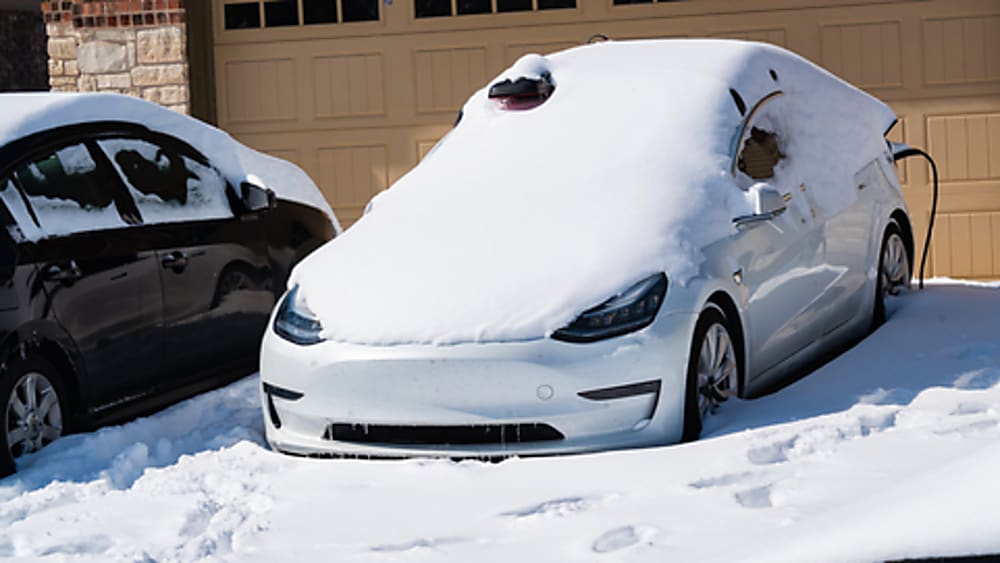Tire maintenance & safety
3 major winter safety tips

Free shipping
Best price guarantee
Special pricing
Financing with Resolve
Easy returns
Tire maintenance & safety

Winter weather transforms familiar roads into challenging terrain that demands respect and preparation. Every year, winter storms contribute to nearly half a million crashes and over 2,000 road deaths across the nation.
Cold temperatures, snow, and ice create hazardous conditions that affect your vehicle's performance and your ability to control it. Even experienced drivers face increased risks when temperatures drop and precipitation freezes on roadways.
The difference between a safe winter journey and a dangerous situation often comes down to three key factors: vehicle preparation, adjusted driving techniques, and emergency readiness. These essential elements work together to protect you and your passengers throughout the winter months.
Winter driving safety tips are practical strategies and precautions that help drivers navigate snow, ice, sleet, and freezing temperatures safely. These guidelines encompass everything from pre-trip vehicle preparation to on-road techniques that account for reduced traction and visibility.
The most effective winter driving safety measures fall into three main categories:
Winter conditions affect multiple aspects of vehicle operation. Cold weather reduces battery performance—sometimes by 30-50% in extreme temperatures. Tire pressure drops approximately one PSI for every 10-degree temperature decrease. Ice and snow dramatically reduce tire traction, increasing stopping distances by up to 10 times compared to dry pavement.
Understanding these challenges helps drivers make informed decisions about when to travel and how to adjust their driving style. The National Highway Traffic Safety Administration emphasizes that "driving too fast for conditions" remains one of the most frequent causes of winter accidents. By implementing comprehensive winter driving safety tips, motorists can significantly reduce their risk of crashes, breakdowns, and weather-related emergencies on the road.
Proper vehicle preparation is the first step toward safe winter driving. As temperatures drop, it's crucial to ensure your car is equipped to handle the harsh conditions. This involves a combination of routine checks and specific adaptations that enhance performance and safety.
By addressing these key areas, you create a safer driving environment, reducing the likelihood of encountering problems on the road. Preparing your vehicle thoroughly is not just about maintenance—it's about peace of mind during winter travel.

Approaching winter roads with care is essential for ensuring your safety. Adjusting your driving methods to accommodate the slick surfaces and reduced visibility that snowy conditions bring can make all the difference. This involves adopting a deliberate pace and anticipating potential challenges.
Adopting these cautious driving habits ensures a more controlled and safe journey through winter's challenges. By remaining vigilant and adjusting your techniques, you can significantly enhance your safety on the road.
Proper preparation goes beyond driving skills and vehicle checks—it's about being ready for unexpected situations. Winter conditions can change quickly, making it essential to have a plan for emergencies.
Being well-prepared with supplies and knowledge to handle emergencies is crucial for safe winter travel. This readiness not only enhances your safety but also provides peace of mind during unforeseen situations.
Winter driving demands respect, preparation, and the right equipment to keep you and your loved ones safe on the road. Your tires serve as the critical connection between your vehicle and the pavement, making them your first line of defense against hazardous winter conditions. When you're ready to upgrade your winter driving safety, we invite you to shop for tires online and find the best deals that match your vehicle and driving needs.
Search By